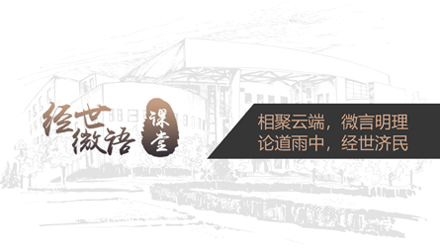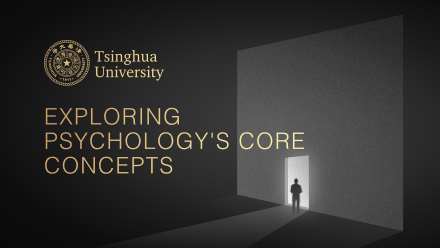
当前课程知识点:History of Chinese Architecture Part I > 5 Architectural remains, art and technology of the Sui and Tang dynasty > Section 2 > Brick and masonry technology in the Sui and Tang dynasty
返回《History of Chinese Architecture Part I》慕课在线视频课程列表
返回《History of Chinese Architecture Part I》慕课在线视频列表
建造一个高层的砖塔,几十米的砖塔
也还是一件有一定技术难度的事情
但是在唐朝有很多这样的砖塔
无论是法王寺塔
还是我们看到的西安的大雁塔、小雁塔
它的这种砖结构的技术
在这个时期已经达到了一个很成熟的水平
在砖石塔的建造当中
我们可以看到像四门塔
尽管它有仿木的这种情况出现
但是它还是紧紧地扣住了
砖石承重的一些基本的特点
在上面砖石的构建
包括屋顶,就是里面那个通道屋顶的做法
都反映了当时人们
对于砖石的特点的熟悉的程度
当然我们刚才提到了高层的砖塔
还有一个很重要的实例
是一座桥,河北赵县的安济桥
就是我们通常说“
“大石桥鲁班造”
实际上是李春造的
这个是桥梁史上
一个很重要的实例
北方的河是季节性的
到了冬天的时候可能水比较少
到了夏天的时候
可能发大水 水很大
在这样的河上建造一座桥
应该怎么样让它来更坚固呢
李春是一个很了不起的工匠
他想到的办法就是
我不要做桥墩,做一个大拱券把它跨过去
这是第一个问题解决了
第二个问题就是发大水的时候
那个水涨上来以后
它会对整个桥身有一个很大的推力
你如果不想法解决这个问题的话
那桥可能发大水就给推倒了
他怎么解决呢
他在那个桥身上再开四个小洞
然后让那个水能从小洞上分流出去
来避免对整个桥身产生强大的推力
他又解决了一个问题
我们叫敞肩券
这样这座桥能够
从隋代建了以后
一直保存下来
而且他做的时候
他还考虑了维修的问题
因为这个石桥总是要有维修
怎么办呢?他是发了平行的券
就是我发了二十八道平行的券
这么发券 发过去
然后任何一个券出了问题
你都可以单独对它进行维修
当然它带来另外一个弱点
就是这座桥的整体性不够好
所以当四五十年代的时候
它有几个券已经坏了,已经倒塌了
桥剩下大半段在那儿
后来做了一个维修,把它整个维修出来
另外赵州桥还有一个很重要的
就是它那个石栏板的造型非常漂亮
可以说跟我们后来看到的
那些石栏板的造型都不一样
它上头雕了很多的龙
然后这些龙在那个石板里头
好像出神入化,在里头穿来穿去,非常地生动
但是今天赵州桥保存下来
这些石栏板基本上是五十年代复刻的
原件保存在赵州桥的博物馆里面
那些是非常珍贵的遗物
现在在桥上是复刻的是很真实地遵照了原来的风格做的
-1 An outline of Chinese Architecture
--Characteristics of Chinese Architecture
--The historical division of Chinese Architecture
--A discussion of the typologies in Chinese Architecture
-2 An outline of Ideas about ancient architecture
--Ancient city planning thoughts and two opposing arguments
--Principles of ancient architecture
--Ideas about ancient architecture
--Ideas about ancient architecture
-Homework
-Section 1
--Early civilization and architectural morphology
--Architecture in the Xia and Shang dynasty
--Architecture in the Xia and Shang dynasty
--Architecture in the Zhou dynasty
-Section 2
--Civilization and cities of the Qin and Han dynasty
--Palaces of the Qin and Han dynasty
--Residential architecture, tombs and other types of architecture
-Homework
-Section 1
--Cities and palaces of the Three Kingdoms, the Jin dynasty and the Southern and Northern Dynasties’ p
--Cities and palaces of the Three Kingdoms, the Jin dynasty and the Southern and Northern Dynasties’ p
--Cities and palaces of the Three Kingdoms, the Jin dynasty and the Southern and Northern Dynasties’ p
--Development of Buddhism and the prosperity of Buddhist architecture
--Buddhist architectural remains in the Southern and Northern Dynasties’ period
-Section 2
--Grottos in the Southern and Northern Dynasties’ period
--Development of wood structures as seen from grottos in the Southern and Northern Dynasties’ period
--Gardens from the Qin and Han dynasty to the Southern and Northern Dynasties’ period
-Homework
-Section 1
--Chinese culture of the Sui and Tang dynasty
--Two capitals of the Sui and Tang dynasty: Chang’an and Luoyang
--Two capitals of the Sui and Tang dynasty: Chang’an and Luoyang
-Section 2
--Li-fang and residential architecture in Chang’an and Luoyang
--Important buildings in the Sui and Tang dynasty palaces
--Gardens of the Sui and Tang dynasty
-Homework
-Section 1
--Religious architecture in the Sui and Tang dynasty
--Wood Buddhist Halls in the Sui and Tang dynasty
--Brick and masonry towers in the Sui and Tang dynasty
-Section 2
--Architectural style and design method in the Sui and Tang dynasty
--Wood frame technology in the Sui and Tang dynasty
--Brick and masonry technology in the Sui and Tang dynasty
--Progression of architectural technology and development of art
-Honework
-Section 1
--History of the Five Dynasties’ period and the Song, Liao and Jin dynasty
--Bianliang of Northern Song and Lin’an of Southern Song
--Pingjiang Prefectural City, Southern Capital of Liao and Central Capital of Jin
-Section 2
--Palaces in Bianliang of Northern Song and Lin'an of Southern Song
--Palaces in the Central Capital in the Jin dynasty
--Gardens of the Song, Liao and Jin dynasty1
--Gardens of the Song, Liao and Jin dynasty 2
-Homework
-Section 1
-Section 2
--Double-eave single-storey wood hall
--Multi-story wood structure s in the Song, Liao and Jin dynasty
-Homework
-Section 1
--Brick and masonry pagodas in the Song, Liao and Jin dynasty
--Brick and masonry pagodas in the Song, Liao and Jin dynasty
--Brick and masonry pagodas in the Liao and Jin dynasty
--Brick and masonry pagodas in the Song dynasty
--Brick and masonry pagodas in the Song dynasty
-Section 2
--A summary of the Yingzao-Fashi
--video
--video
--video
--video
--video
-Homework



